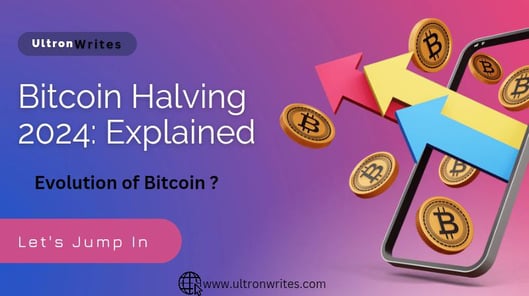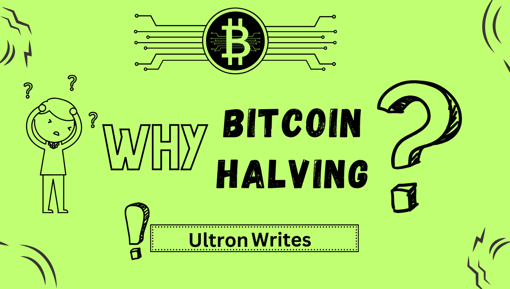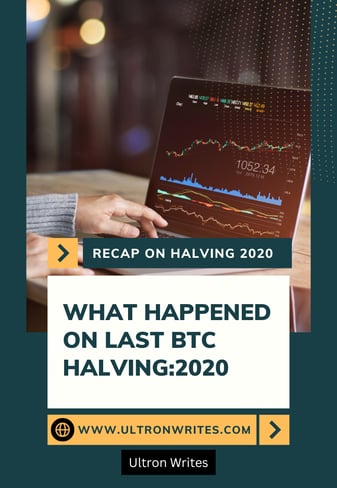The Evolution of Bitcoin: Halving 2024 EXPLAINED
The next bitcoin halving is expected in April 2024. Is it a turnaround for the struggling "crypto market"?






The easy explanation to this would be:
Limited supply = Higher Demand.
That's right, for traders, the halving of Bitcoin is a crucial event, as the halving reduces the number of new Bitcoin generations. This could lead to an increase in prices if demand is high.
Bitcoin Events: 2009-2024


Bitcoin experiences halving events as part of its software design, which was developed by an enigmatic individual or group operating under the pseudonym 'Satoshi Nakamoto.'
Although Satoshi Nakamoto did not provide explicit reasons for these halvings, there is widespread speculation that the system's intention was to accelerate the distribution of coins during the initial stages to encourage more participants to join the network and engage in block mining. According to this theory, the reduction in block rewards at regular intervals was implemented because it was anticipated that the value of each rewarded coin would rise as the network continued to grow.
Another hypothesis suggests that the introduction of halvings aimed to establish deflationary mechanisms within Bitcoin, ensuring a predetermined number of new coins are rewarded per block. This stands in contrast to the traditional fiat monetary system, where central banks' excessive printing can lead to a sustained devaluation of the currency. The fixed total supply of 21 million bitcoins and the predetermined rate of new coin creation serve as safeguards against such devaluation risks.
Critics of Bitcoin's design, which includes halvings and the limited supply of 21 million coins, argue that it encourages users to save rather than spend, as they anticipate coins will appreciate over time. This propensity may have contributed to past boom and bust cycles, with users hoarding coins in anticipation of cashing out at critical price levels.
The most recent Bitcoin halving took place on 11 May 2020, when the mining reward per block was halved from 12.5 BTC to 6.25 BTC/block. This created a shortage of supply, which increased demand and caused a spike in market value.
The news of the halving had a positive impact as the price before the halving - 2020 jumped from $6877.62 on 11 April (one month before the halving) to $8821 at the time of the event itself.
Within a year, Bitcoin managed to reach $49,504 on 11 May 2021, despite drastic volatility in the cryptocurrency market.
A similar trend was observed during the previous Bitcoin halving events in 2012 and 2016. In both cases, the most significant period of price growth occurred after the halving event. Although there was a significant drop in value around 12-17 months after the halving, the price still remained significantly higher than before the halving.


How does the Bitcoin Halving work ?
The potential impact of the upcoming Bitcoin halving on its price remains uncertain. Several analysts expect a pattern similar to the previous three halving events, with prices spiking after the halving due to the reduced supply of new coins.
However, the extent of any price increase will depend on how demand for Bitcoin develops during the halving period. Demand is not guaranteed to increase and may even remain constant, given that the cryptocurrency market has matured significantly since the last halving in 2020. In addition, there is now a wider range of established cryptocurrencies competing for users, adding complexity to the overall market dynamics.
However, the crypto adjustment and the advantages of web3 could result in this halving being a good contributing factor to change the market dynamics and start a new uptrend.
History speaks for itself.
In conclusion, Bitcoin's planned halving in 2024 will be a pivotal event in the cryptocurrency world. While historical trends suggest the possibility of price increases due to reduced coin supply, the outcome remains uncertain.
The landscape has evolved significantly since the last halving, with increased competition from other cryptocurrencies and a maturing market. As we approach this event, it will be fascinating to observe how supply and demand dynamics, along with market sentiment, ultimately shape the future of bitcoin.
There's plenty of analysis out there, but with the pattern we've seen, we'll see how the direction of the general crypto market is decided after the halving event.


See you in the next article!
